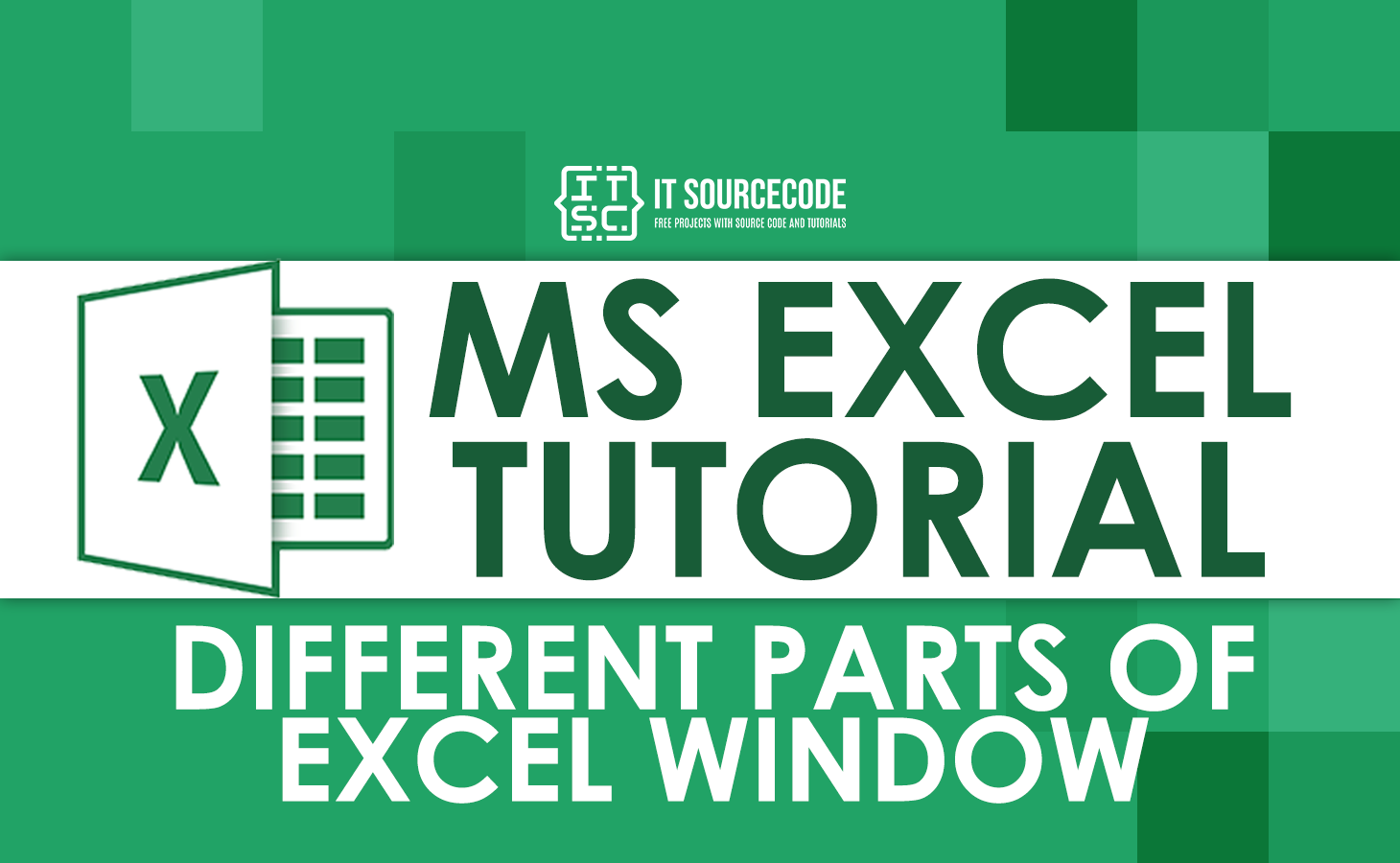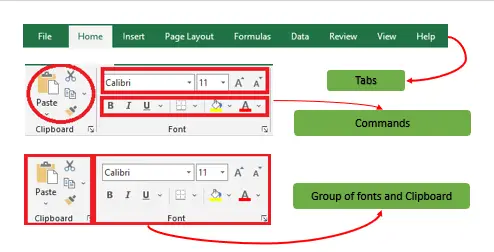This tutorial will provide a complete guide to different parts of the Excel window. It is designed to help you become an expert in no time.
If you like these types of tutorials, we also have Identifying different parts of a Microsoft Word window and different parts of a PowerPoint window with its functions.
What is Excel?
Excel is a powerful spreadsheet program that is widely used for data analysis, reporting, and budgeting.
This software is highly versatile and offers a wide range of features to meet the needs of both casual and professional users.
A little recap, Excel is a spreadsheet software developed by Microsoft that is part of the Microsoft Office suite.
It was first released in 1985 and has since evolved into a powerful tool for data analysis, reporting, and budgeting.
Besides that, this software allows us to create, edit, and save spreadsheets that can contain numerical data, text, and formulas.
Now, let’s get in-depth and understand the different parts of Excel…
Identifying Different Parts of Excel Window
Every time we open Excel, we are presented with the Excel window. The Excel window consists of several parts, each with a specific purpose.
Understanding these parts is essential to effectively use Excel.
Hence, take a look at the image below as we tackle definitions and functions as we go along.

Here are the parts of Excel along with each function.
The Ribbon
The Ribbon is located at the top of the Excel window and provides access to the most commonly used Excel commands.
The ribbon is composed of the following:
- Groups
They organize related commands; the name of each group is displayed below the Ribbon. - Commands
They appear within each group, as previously stated. - Tabs
They are the Ribbon’s top part, and they include groups of related commands.
Some of the tabs that you may see in the ribbon include:
- Home
- Basically, the Home tab contains commands for formatting cells, working with fonts, applying styles, and more.

- Insert
- The Insert tab allows you to insert different elements into your worksheet, such as charts, tables, shapes, and images

- Page Layout
- Page layout tab provides options for controlling the overall appearance of your worksheet, such as setting margins, paper size, and page orientation.

- Formulas
- This Formula tab contains commands for working with formulas and functions, such as creating and editing formulas, using functions, and managing named ranges.

- Data
- This Data tab provides commands for working with data, such as sorting, filtering, and grouping data.

- Review
- Review tab provides commands for reviewing and commenting on your worksheet, such as checking spelling and grammar, tracking changes, and inserting comments.

- View
- This view tab provides commands to view the Excel worksheet, like changing views, freeze panes, arranging multiple windows, etc.

Quick Access Toolbar
This toolbar can be found in the upper left-hand corner of the screen.
Its purpose is to display the most frequently used Excel commands.
You can personalize this toolbar with your preferred commands.
File Tab
This File menu does the file-related operations wherein you can create a new Excel workbook, open an existing file, save, save as, print file, etc.
Title Bar
The header or title bar of the spreadsheet is located at the top of the window. It presents the name of the active document.
Control buttons
They are those symbols in the upper-right of the window that allow you to modify the labels, minimize, maximize, share, and close the sheet.
Cells
Cells are those parallelepipeds that divide the spreadsheet into several segments that allow rows to be separated from columns.
The first cell of a spreadsheet is represented by the initial letter of the alphabet and the number one (A1).
Active Cell
The cell is selected in the active worksheet.
Dialog Box Launcher
This is a very small down arrow located in the lower-right corner of a command group on the Ribbon.
By clicking this arrow explore more options about the concerned group.
Name box
The Name Box is located to the left of the formula bar and displays the cell address of the active cell.
You can also use it to quickly navigate to a specific cell in your worksheet by typing its address.
Formula bar
It is a bar that allows you to observe, insert, or edit the information/formula entered in the active cell.
Scrollbars
Those are the tools that allow you to mobilize both the vertical and horizontal view of the document.
They can be activated by clicking on the internal bar of your platform, or on the arrows, you have on the sides.
In addition to that, you can use the mouse wheel to automatically scroll up or down; or use the directional keys.
Spreadsheet Area
This is the area where you enter your data. It is the entire spreadsheet, complete with rows, cells, columns, and built-in data.
We can carry out toolbar activities or arithmetic operation formulas using shortcuts.
The blinking vertical bar called “cursor” is the insertion point. It indicates the insertion location of the typing.
The Worksheet
The Worksheet is where you enter and manipulate data in Excel.
It is made up of rows and columns and is where you enter and format data, create formulas, and build charts.
In addition to that, the worksheet is the main working area in Excel and is where you will spend most of your time.
The Formula Bar
The Formula Bar is located above the worksheet and is used to enter and display formulas.
When you click on a cell in the worksheet, the contents of that cell are displayed in the Formula Bar.
You can also use the Formula Bar to enter or edit formulas.
The Status Bar
The status bar is located at the bottom of the Excel window and provides information about the current state of your worksheet.
View Buttons
It is a group of three buttons arranged at the left of the Zoom control, close to the right-bottom of the screen.
Through this, you can see three different types of Excel sheet views.
- Normal view: This displays the Excel page in normal view.
- Page Layout view: This displays the exact view of Excel’s page as it will be printed.
- Page Break view: This shows the page break preview before printing.
Zoom Control
The Zoom control in Microsoft Excel is a feature that allows you to change the magnification level of your worksheet.
By using the zoom control, you can make the content of your worksheet appear larger or smaller on the screen.
What are the 4 Major Parts of Excel?
Microsoft Excel is a powerful spreadsheet software that consists of several different parts, but the four major components are:
Cells
This is the basic unit of an Excel worksheet, where data is entered and processed. Cells are organized into rows and columns, creating a grid-like structure.
Rows VS Columns
Rows are horizontal lines that run across the worksheet and are identified by numbers, while columns are vertical lines that run down the worksheet and are identified by letters.
Worksheets
A worksheet is a single sheet within a workbook, which is the main document in Excel.
You can have multiple worksheets within a workbook, and each worksheet can contain different data and calculations.
Formulas and Functions
These are mathematical expressions that can perform calculations based on the data in the cells.
Functions are predefined formulas that perform specific calculations, such as SUM or AVERAGE, while formulas are custom expressions that you can create.
These four components form the foundation of Microsoft Excel and are used to manage, analyze, and visualize data.
What is the difference between a Worksheet and a Workbook in Excel?
A worksheet is a single sheet in an Excel workbook, while a workbook is a collection of one or more worksheets.
Each worksheet in a workbook is represented by a tab at the bottom of the Excel window.
Conclusion
Finally, this tutorial identifying Parts of an Excel Window provides you with an idea of what function you will use in your worksheet.
Now that you understand the components and functions of Excel Windows, you are ready to move on to more advanced Excel functions.
Anyhow, feel free to check out our website for more educational content. Thank you for reading 🙂


